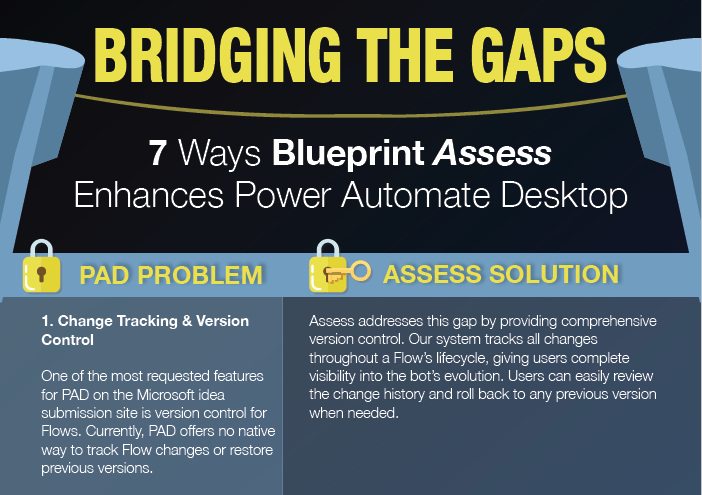From RPA to APA: Unlocking the Next Era of Intelligent Automation
Automation has long been a driving force in enterprise efficiency, but we are now on the cusp of a fundamental shift: the move from Robotic Process Automation (RPA) to Agentic Process Automation (APA). This transition marks a critical evolution from rigid, rule-based automation toward flexible, context-aware AI agents that can dynamically adapt to complex business environments.
Why does this shift matter? Autonomy in business operations means moving beyond simple task automation to systems that can make informed decisions, optimize workflows in real time, and respond intelligently to unforeseen changes. Organizations are no longer satisfied with automation that follows predefined scripts; they seek solutions that can think, learn, and adapt—ushering in the agent economy.
Enter LLMs: Unlocking a New Dimension of Automation
The rise of Large Language Models (LLMs) represents a paradigm shift. LLMs provide cost-effective, adaptive intelligence, enabling AI to process unstructured data, synthesize context, and reason through complex problems. This dramatically expands the range of tasks that can be automated.
However, LLMs introduce their own set of challenges. They struggle with repetitive, structured tasks where exact accuracy is critical. They also function as black boxes, making it difficult to predict or explain their decision-making processes. Even when LLMs generate reasoning traces, these can be unreliable or completely fabricated (hallucinated), making them difficult to trust for enterprise applications.
Bridging the Gap: The Need for Agentic Process Automation (APA)
Organizations need both reliability and flexibility:
-
RPA offers reliability—it follows clear, predefined rules with high accuracy but lacks adaptability.
-
LLMs offer flexibility—capable of handling unstructured data and contextual reasoning but lack explainability and consistency.
The solution is Agentic Process Automation (APA)—a system that combines the structured reliability of RPA with the contextual adaptability of LLMs. APA incorporates an auditability and context layer into the AI agent stack, ensuring enterprises can understand, trust, and validate AI-driven decisions. This balance is essential for widespread adoption of AI-driven automation.
Navigating the Challenges of Agentic AI and RPA Integration
As organizations explore the convergence of agentic Artificial Intelligence (AI) and Robotic Process Automation (RPA), they must navigate a complex landscape of challenges. While the potential benefits—including increased efficiency, enhanced decision-making, and greater automation—are substantial, successful adoption requires addressing several key hurdles.
1. Security and Compliance Challenges
The autonomous nature of agentic AI introduces significant security risks. These systems are vulnerable to data breaches, adversarial attacks, and manipulation by malicious actors. To safeguard sensitive information, organizations must implement robust security measures, including encryption, access controls, and continuous monitoring. Compliance with regulatory standards is equally critical to prevent unauthorized access and ensure responsible AI deployment.
2. Infrastructure and Scalability Issues
Integrating agentic AI into existing enterprise systems presents challenges related to scalability and reliability. AI agents operate continuously, placing increased demands on computational resources. Organizations must assess their infrastructure’s capacity and invest in scalable solutions to maintain performance and avoid bottlenecks. Cloud-based architectures, edge computing, and AI-optimized hardware can help ensure smooth scalability.
3. Ethical and Legal Considerations
Deploying autonomous AI agents raises ethical and legal concerns, particularly regarding accountability and bias. Who is responsible when an AI-driven decision leads to unintended consequences? How can organizations ensure fairness and transparency? Establishing clear ethical frameworks, implementing bias detection mechanisms, and enforcing accountability policies are essential steps in addressing these concerns.
4. Integration and Adoption Barriers
Despite the enthusiasm surrounding AI, a significant gap exists between intent and implementation. A McKinsey survey found that while 63% of executives prioritize AI adoption, 91% feel unprepared for responsible integration. This underscores the need for a structured approach that includes employee training, change management strategies, and cross-functional collaboration to bridge the readiness gap.
5. Human-AI Collaboration
As AI becomes more prevalent in the workplace, fostering effective human-AI collaboration is vital. Organizations must create management structures that facilitate seamless interaction between employees and AI systems. Addressing workforce concerns, redefining roles, and emphasizing AI as an augmentation tool rather than a replacement can ease resistance and enhance adoption.
Strategies for Successful Adoption
To overcome these challenges and maximize AI’s potential, organizations should implement the following strategies:
-
Develop Robust Security Protocols: Implement strong security frameworks, including data encryption, threat detection, and compliance monitoring, to mitigate risks.
-
Invest in Scalable Infrastructure: Ensure IT systems can support the demands of agentic AI by adopting flexible, high-performance computing solutions.
-
Establish Ethical Guidelines: Define transparent policies around AI decision-making, bias mitigation, and accountability to build trust among stakeholders.
-
Enhance Organizational Preparedness: Provide training and resources to equip employees with the skills needed for AI integration, closing the gap between aspiration and execution.
-
Foster Human-AI Collaboration: Develop strategies to integrate AI into workflows while promoting cooperation and addressing concerns about job displacement.
By proactively addressing these challenges, organizations can harness the power of agentic AI to drive innovation, improve efficiency, and maintain a competitive edge in an evolving digital landscape.
Accelerating AI Agent Onboarding with Blueprint Assess
To successfully deploy AI agents, organizations need clear visibility into their existing RPA landscape. Blueprint Assess plays a crucial role in this transition by automatically generating dynamic, editable specifications from automation code, reducing the time and effort required to onboard AI agents. By extracting critical process knowledge, identifying dependencies, and streamlining documentation, Blueprint Assess provides AI agents with the much-needed context to navigate legacy RPA environments efficiently.
With Blueprint Assess, organizations can:
-
Reduce onboarding time for AI agents by 61% through automated documentation generation.
-
Enhance AI-driven automation reliability by identifying process gaps and dependencies.
-
Improve compliance and security with automated quality checks and version tracking.
By leveraging Blueprint Assess, enterprises can bridge the gap between traditional RPA and Agentic AI, enabling faster, more effective AI adoption while maximizing automation ROI.
Share this
Recent Stories

INFOGRAPHIC - Bridging the Gaps: How Blueprint Assess Enhances Power Automate Desktop

Agentic AI Isn’t Ready to Run the Show, But Blueprint Helps It Get There



